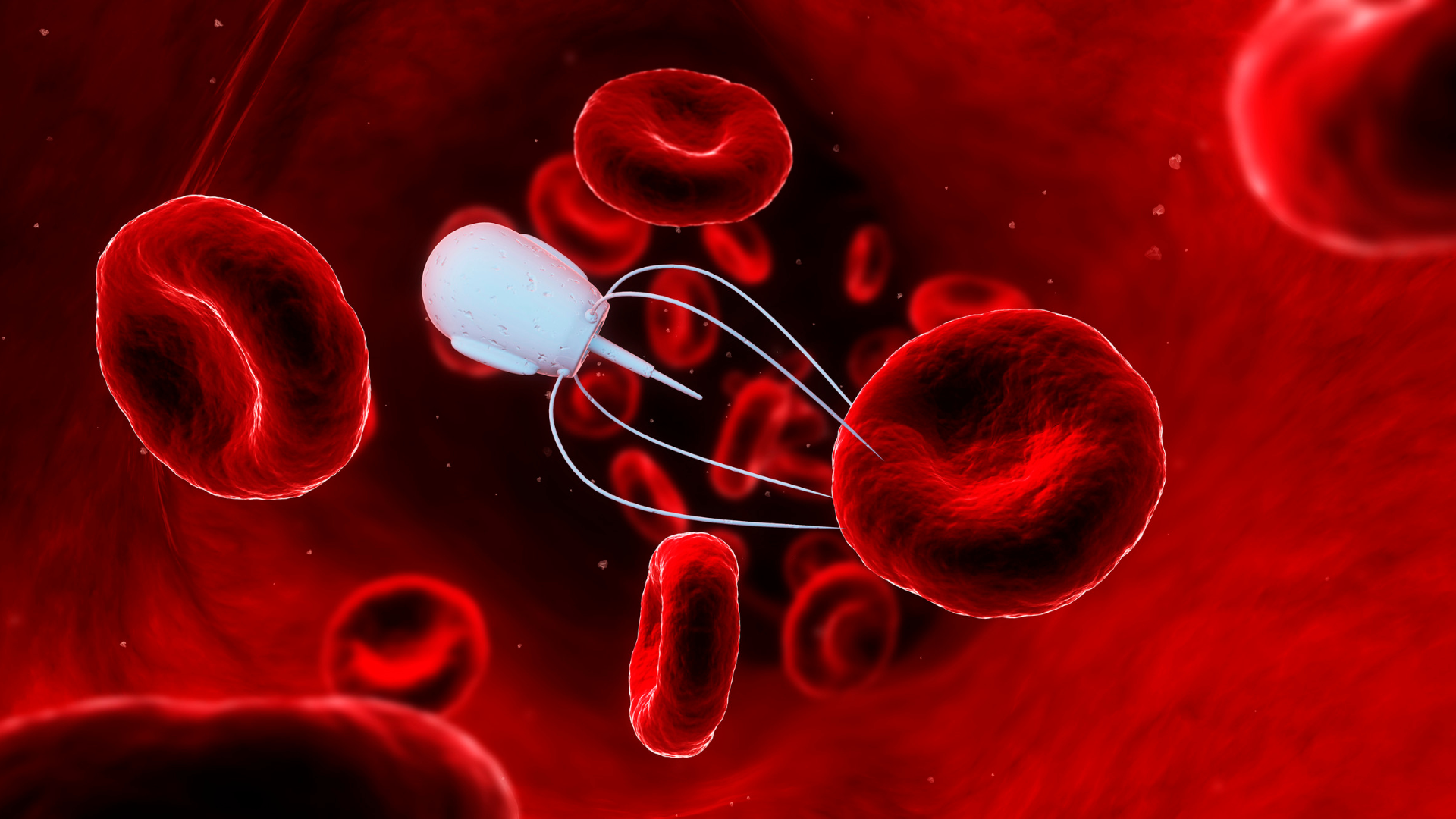Advancements in Inhaled Gene Therapy for Pulmonary Conditions

Gene therapy represents a groundbreaking approach in the field of medicine, offering the potential to treat and possibly cure a wide range of genetic disorders by correcting or compensating for defective genes. This method involves the introduction, alteration, or removal of genes within an individual's cells and biological tissues to treat disease. The concept of gene therapy has evolved over decades, from a mere scientific hypothesis to real-world applications that have significantly impacted patients' lives.
Inhaled gene therapy emerges as a novel and promising approach within this context, specifically targeting lung and respiratory diseases. This method leverages the respiratory system as a direct route to deliver therapeutic genes, offering a less invasive and potentially more efficient way to treat pulmonary conditions. By inhaling gene therapy agents, patients can receive targeted treatment directly to the affected areas, opening new avenues for managing diseases that were once considered untreatable through conventional means.
This innovative approach not only signifies a leap forward in treating respiratory diseases but also highlights the evolving landscape of gene therapy. As we delve deeper into the specifics of inhaled gene therapy, its mechanisms, applications, and future prospects, it's essential to appreciate the foundational principles of gene therapy that paved the way for these advancements.
Inhaled Gene Therapy: How Does It Work?
Inhaled gene therapy represents a cutting-edge frontier in the treatment of pulmonary diseases, offering a targeted approach that leverages the lungs' direct access to deliver therapeutic genes. This innovative method circumvents many limitations associated with traditional gene therapy techniques, such as systemic immunogenicity and the challenge of targeting specific tissues. By inhaling aerosolized vectors carrying therapeutic genes, patients can receive localized treatment to lung tissues, potentially transforming the management of respiratory disorders.
The mechanism behind inhaled gene therapy hinges on the delivery of genetic material directly into the lung tissue through inhalation. This process involves several key components:
- Vectors: These are vehicles used to carry the therapeutic genes into the patient's cells. Vectors can be viral or non-viral. Viral vectors, such as adenoviruses or lentiviruses, have been engineered to remove their ability to cause disease while retaining their capacity to deliver genetic material into cells. Non-viral vectors include lipid nanoparticles and other synthetic carriers designed to protect the genetic material during delivery and facilitate its entry into cells.
- Aerosolization: This is the process of converting the vector-gene solution into an aerosol form that can be inhaled into the lungs. The efficiency of aerosolization and the particle size are crucial factors that determine the distribution and deposition of the therapeutic agents within the lung tissue.
- Gene Transfer: Once the aerosolized vectors reach the lung cells, the therapeutic genes are transferred into the cell nucleus, where they can be expressed. This expression enables the production of the missing or malfunctioning protein, addressing the root cause of the disease.
Advantages Over Traditional Methods
Inhaled gene therapy offers several advantages over traditional systemic delivery methods:
- Targeted Delivery: Direct delivery to the lung tissue ensures that the therapeutic effect is localized, reducing the risk of systemic side effects and improving the efficiency of the treatment.
- Non-invasive: Unlike other gene therapy methods that may require complex surgical procedures, inhaled gene therapy is non-invasive, making it easier to administer and more acceptable to patients.
- Repeated Dosing: The non-invasive nature of the treatment allows for repeated dosing, which is beneficial for diseases that require long-term management or where the therapeutic effect diminishes over time.
- Reduced Immunogenicity: Direct delivery to the lung tissue can potentially reduce the immune response commonly associated with systemic delivery of viral vectors, thereby improving the safety profile of gene therapy.
Inhaled gene therapy stands out as a promising approach for treating a variety of respiratory diseases. By delivering genetic material directly to the lungs, this method opens new possibilities for patients with conditions that have been challenging to treat with conventional therapies.
Applications of Inhaled Gene Therapy
Target Diseases
- Cystic Fibrosis (CF): Perhaps the most prominent application of inhaled gene therapy is in the treatment of CF, a genetic disorder that affects the lungs and other organs, leading to severe respiratory issues. CF is caused by mutations in the CFTR gene, which leads to the production of a defective protein responsible for regulating salt and water transport in the body. Inhaled gene therapy aims to deliver a correct version of the CFTR gene directly to the lung cells, restoring the function of this protein and alleviating the pulmonary symptoms of the disease.
- Lung Cancer: Lung cancer remains one of the leading causes of cancer-related deaths worldwide. Inhaled gene therapy offers a novel approach to treating lung cancer by delivering genes that can induce apoptosis (cell death) in cancer cells, inhibit tumor growth, or enhance the immune system's ability to fight cancer. This targeted approach minimizes damage to healthy cells and has the potential to improve survival rates and quality of life for lung cancer patients.
- Respiratory Infections: Inhaled gene therapy is also being explored as a treatment for respiratory infections, including those caused by resistant bacteria or viruses. By delivering genes that encode antimicrobial peptides or proteins that can inhibit viral replication, this approach offers a new avenue for treating infections that are difficult to manage with traditional antibiotics or antiviral medications.
Recent Breakthroughs and Case Studies
- CFTR Gene Therapy for Cystic Fibrosis: Recent clinical trials have demonstrated the potential of inhaled gene therapy to improve lung function in CF patients. A study involving the delivery of a functional CFTR gene via an aerosolized viral vector showed promising results, with treated patients experiencing improved respiratory function and reduced pulmonary exacerbations. These findings represent a significant step forward in the quest for a cure for CF.
- siRNA Therapy for Lung Cancer: Small interfering RNA (siRNA) technology has been utilized in inhaled gene therapy to target specific genes involved in lung cancer progression. Early-stage clinical trials have shown that inhaling siRNA molecules that target and silence these genes can lead to tumor shrinkage and reduced metastasis in lung cancer patients, offering a new hope for targeted cancer therapy.
Current Research and Clinical Trials
Ongoing research and clinical trials are crucial for advancing the field of inhaled gene therapy. Current studies focus on improving vector efficiency, reducing immunogenicity, and expanding the range of treatable diseases. Efforts are also being made to develop non-viral delivery systems that can safely and effectively deliver therapeutic genes to lung tissues.
One area of intense research is the development of lipid nanoparticles (LNPs) as a non-viral delivery method for inhaled gene therapy. LNPs have shown promise in encapsulating and protecting RNA-based therapies, facilitating their entry into cells and enhancing gene expression. This approach has the potential to overcome some of the limitations associated with viral vectors, such as immune response and vector capacity, further broadening the applicability of inhaled gene therapy.
The potential of inhaled gene therapy to provide targeted, efficient, and non-invasive treatment options for pulmonary diseases is immense. As research progresses and more clinical trials are conducted, the scope of diseases that can be treated with this innovative approach will likely expand, offering new hope to patients suffering from respiratory conditions.
Challenges and Limitations of Inhaled Gene Therapy
While inhaled gene therapy offers promising prospects for treating respiratory diseases, it also faces several challenges and limitations that must be addressed to fully realize its potential. This section explores the technical hurdles, safety concerns, ethical considerations, and regulatory obstacles associated with this innovative therapeutic approach.
Technical Challenges
- Vector Efficiency and Stability: One of the primary technical challenges is developing vectors that can efficiently and consistently deliver therapeutic genes to lung cells. Viral vectors must be engineered to minimize their immunogenicity while retaining their ability to infect target cells. Non-viral vectors, such as lipid nanoparticles, must be optimized for stability, payload capacity, and the ability to penetrate the mucus barrier in the lungs.
- Targeted Delivery and Expression: Achieving targeted delivery to the desired cell types within the lungs and ensuring long-term expression of the therapeutic gene are critical challenges. The heterogeneity of lung tissue and the presence of physical barriers, such as the epithelial lining fluid and immune defenses, can impede effective gene transfer and expression.
- Repeat Dosing: For chronic diseases, repeated administration of the therapy may be necessary to maintain therapeutic effects. However, repeated dosing can lead to the development of immune responses against the vector or therapeutic protein, diminishing efficacy and potentially leading to adverse reactions.
Safety Concerns
- Immunogenicity: The potential for viral vectors to elicit immune responses is a significant safety concern. Such responses can reduce the effectiveness of the therapy and pose risks to the patient's health, particularly in the case of severe reactions.
- Off-Target Effects: There is a risk that the delivered genetic material may integrate into the genome in unintended locations, potentially leading to off-target effects, including tumorigenesis. Although advancements in vector technology have reduced these risks, they remain a concern for long-term safety.
- Inflammation and Toxicity: The inhalation of gene therapy vectors can cause inflammation and toxicity in the lung tissue, particularly with repeated administration. Monitoring and managing these side effects are essential for the safe application of inhaled gene therapy.
Ethical and Regulatory Hurdles
- Ethical Considerations: Ethical issues arise regarding the consent process, particularly for therapies targeting genetic diseases with potential hereditary implications. The long-term effects of gene therapy are still not fully understood, raising questions about the ethical implications of modifying genetic material.
- Regulatory Challenges: The approval process for gene therapies is complex and rigorous, requiring extensive preclinical and clinical data to demonstrate safety and efficacy. The novelty of inhaled gene therapy poses additional regulatory challenges, as existing frameworks may not fully accommodate the unique aspects of this approach.
- Market Access and Affordability: Even once approved, making inhaled gene therapy accessible and affordable to patients is a significant challenge. The high costs associated with development, production, and administration of gene therapies can limit their availability, particularly in low- and middle-income countries.
Despite these challenges, the potential benefits of inhaled gene therapy for treating pulmonary diseases are substantial. Addressing these limitations requires ongoing research, collaboration between scientists, ethicists, and regulators, and innovative solutions to ensure that these therapies can be safely and effectively delivered to patients in need.
The Future of Inhaled Gene Therapy
The trajectory of inhaled gene therapy is marked by rapid advancements and promising innovations, pointing toward a future where respiratory diseases are treated more effectively and non-invasively. As researchers overcome current challenges and limitations, the potential of this therapeutic approach to revolutionize the treatment of pulmonary conditions becomes increasingly tangible.
Innovations in Vector Technology and Delivery Methods
- Next-Generation Vectors: Ongoing research is focused on developing more efficient and less immunogenic vectors. These include engineered viral vectors with reduced host immune response profiles and synthetic vectors, such as lipid nanoparticles, which offer versatility in gene delivery with minimized safety concerns.
- Targeted Delivery Systems: Advances in nanotechnology and bioengineering are enabling the creation of delivery systems that can target specific cell types within the lungs, enhancing the efficacy and reducing the risks of off-target effects. These systems are designed to navigate the complex lung environment, ensuring that therapeutic genes reach their intended destinations.
- Smart Inhalation Devices: The development of smart inhalation devices that can optimize the delivery of gene therapy aerosols is another area of innovation. These devices can control particle size, dosage, and timing of administration, improving the precision and effectiveness of treatment.
Expanding the Range of Treatable Diseases
As the technology matures, inhaled gene therapy is expected to expand beyond its current applications, addressing a wider range of respiratory diseases and potentially systemic conditions. Diseases such as asthma, pulmonary hypertension, and rare genetic disorders affecting the lungs could benefit from targeted gene therapy approaches. Moreover, the flexibility of gene therapy could allow for the development of treatments for emerging respiratory pathogens, offering a rapid response to future pandemics.
Ethical and Societal Implications
The advancement of inhaled gene therapy also raises important ethical and societal questions. As the possibility of curing genetic diseases becomes a reality, discussions about access to therapy, consent, and the long-term impact of genetic modifications will become increasingly pertinent. Addressing these questions requires a collaborative effort among scientists, ethicists, policymakers, and the public to ensure that the benefits of gene therapy are accessible and equitable.
Conclusion
In conclusion, inhaled gene therapy represents a frontier of medical science with the potential to transform the treatment of pulmonary diseases. By addressing the technical, safety, ethical, and regulatory challenges that currently limit its application, this promising therapeutic approach can fulfill its potential, offering new hope to patients suffering from chronic and acute respiratory conditions. The continued evolution of inhaled gene therapy underscores the importance of innovation, collaboration, and dialogue in advancing healthcare and improving patient outcomes.
The future of inhaled gene therapy is not without its challenges, but the potential benefits for patients with pulmonary diseases are significant. Continued investment in research and development, along with thoughtful consideration of the ethical and regulatory landscape, will be key to realizing the full potential of this innovative approach.
Get your weekly dose of industry news and announcements here, or head over to our Formulation portal to catch up with the latest advances in manufacture and therapeutic delivery.






